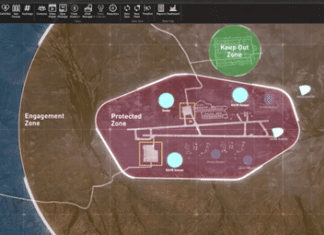This post is also available in:
 עברית (Hebrew)
עברית (Hebrew)
The US Defense Department accounts for 56 percent of the federal government’s carbon footprint and 52 percent of its electricity use. Global warming will spur new conflicts around the world. The US DoD is increasingly alarmed about the security implications of climate change, and it is over this backdrop that the US Army has just published its first climate strategy.
The strategy sets out ambitious goals: carbon-free electricity for installations by 2030. Net zero emissions from Army installations by 2045. An increasingly electrified vehicle fleet, including developing electric tactical vehicles — the ones that actually drive out into combat — by 2050. Microgrid installations on all Army posts by 2035, paving the way for increased renewable energy. The Army also wants to train its personnel about climate issues and to reduce the carbon footprint of its military exercises.
The strategy notes “an increased risk of armed conflict in places where established social orders and populations are disrupted. The risk will rise even more where climate effects compound social instability, reduce access to basic necessities, undermine fragile governments and economies, damage vital infrastructure, and lower agricultural production.”
“Climate impacts will disrupt Army activities, displace individuals and communities, and increase the frequency of crisis deployments,” the strategy says. “The Army must prepare for potential consequences including energy and water scarcity; damage to installations and infrastructure; displacement of and disruptions to operations, supply chains, and logistics; and imperiled Soldier health through exposure to airborne irritants like smoke and dust, disease vectors, and temperature extremes.”
The strategy still needs to be backed by an actual budget. But experts say the goals are concrete and should result in swift movement, according to washingtonpost.com.
The strategy manifests a reversal, under President Joe Biden, of the federal approach to climate change, something former President Donald Trump openly questioned. The divide between the parties on the Defense Department’s spending on climate-related initiatives will grow more intense in a few weeks, once a new National Defense Strategy and a fiscal 2023 budget request become public.
Proponents of incorporating climate change into military efforts say that in many cases, doing so can actually improve the fighting effectiveness of troops. In combat, the supply lines that provide fuel for forward operating bases, Humvees and other fighting vehicles are major targets for attack. Taking fossil fuels out of the equation — or even just improving the fuel efficiency of tanks and other heavy vehicles — can save soldiers’ lives.
Critics, though, say the climate issues are a distraction from the core business of the military.


























